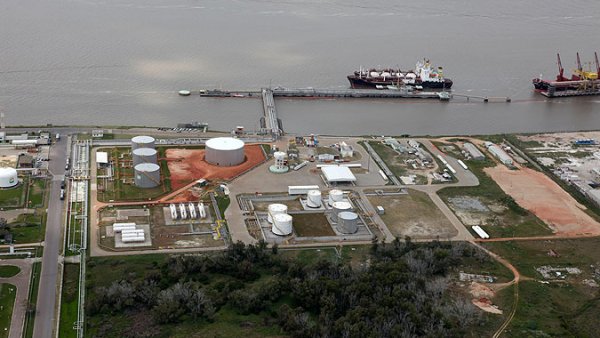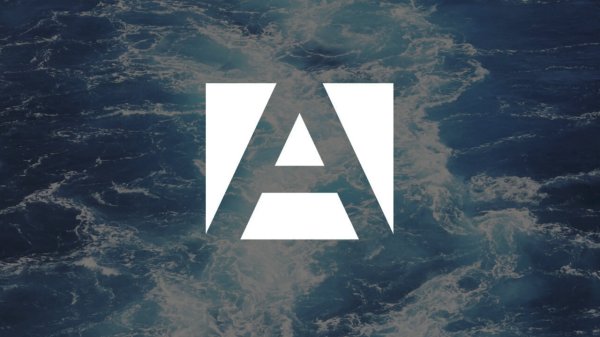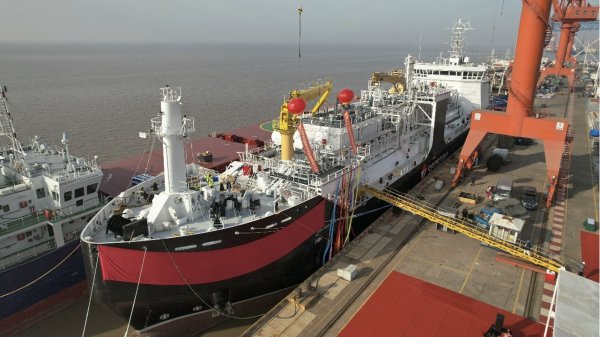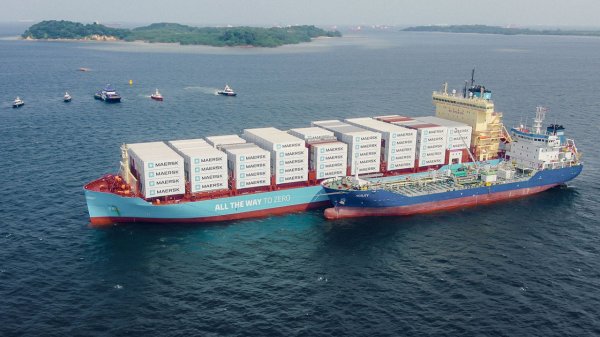Weekly BIX 380 at highest level since July 2015
Highest weekly average and end-of-week BIX 380 in 17 months.
The daily global average for 380 centistoke (cSt) intermediate fuel oil (IFO), the Bunker Index 380 (BIX 380), recorded its highest end-of-week price of the year on Friday.
The daily BIX 380 ended week 51 at $355.57 per tonne, up $2.75, or 0.78 percent, on the figure recorded seven days earlier.
Friday's end-of-week price was the highest since the $361.53-per-tonne index recorded on Friday 10th July 2015. The week-on-week increase was the fourth in a row.
Meanwhile, the weekly BIX 380 average increased by $5.27, or 1.5 percent, to $355.74 per tonne, up from $350.47 per tonne the previous week. The $355.74-per-tonne average is the highest since the week ending 17th July 2015 ($357.77 per tonne).
The BIX 380 is the daily global average price for all 380 cSt (or IFO 380) assessment prices published on the Bunker Index website.
Below are tables of recent end-of-week daily BIX 380 prices and weekly BIX 380 averages.
End-of-week prices
Weekly averages
The daily BIX 380 ended week 51 at $355.57 per tonne, up $2.75, or 0.78 percent, on the figure recorded seven days earlier.
Friday's end-of-week price was the highest since the $361.53-per-tonne index recorded on Friday 10th July 2015. The week-on-week increase was the fourth in a row.
Meanwhile, the weekly BIX 380 average increased by $5.27, or 1.5 percent, to $355.74 per tonne, up from $350.47 per tonne the previous week. The $355.74-per-tonne average is the highest since the week ending 17th July 2015 ($357.77 per tonne).
The BIX 380 is the daily global average price for all 380 cSt (or IFO 380) assessment prices published on the Bunker Index website.
Below are tables of recent end-of-week daily BIX 380 prices and weekly BIX 380 averages.
End-of-week prices
| Date | Week | Daily BIX 380 ($) | $ (+/-) | % (+/-) |
| 23/12/2016 | Week 51 | 355.57 | +2.75 | +0.78 |
| 16/12/2016 | Week 50 | 352.82 | +11.83 | +3.47 |
| 09/12/2016 | Week 49 | 340.99 | +11.77 | +3.58 |
| 02/12/2016 | Week 48 | 329.22 | +13.28 | +4.20 |
| 25/11/2016 | Week 47 | 315.94 | +10.22 | +3.34 |
| 18/11/2016 | Week 46 | 305.72 | -1.21 | -0.39 |
| 11/11/2016 | Week 45 | 306.93 | -1.05 | -0.34 |
| 04/11/2016 | Week 44 | 307.98 | -12.96 | -4.04 |
| 28/10/2016 | Week 43 | 320.94 | -0.47 | -0.15 |
Weekly averages
| Week Ending | Week | BIX 380 Avg. ($) | $ (+/-) | % (+/-) |
| 23/12/2016 | Week 51 | 355.74 | +5.27 | +1.50 |
| 16/12/2016 | Week 50 | 350.47 | +12.92 | +3.83 |
| 09/12/2016 | Week 49 | 337.55 | +17.24 | +5.38 |
| 02/12/2016 | Week 48 | 320.31 | +7.41 | +2.37 |
| 25/11/2016 | Week 47 | 312.90 | +7.81 | +2.56 |
| 18/11/2016 | Week 46 | 305.10 | -2.95 | -0.96 |
| 11/11/2016 | Week 45 | 308.05 | -5.62 | -1.79 |
| 04/11/2016 | Week 44 | 313.66 | -8.57 | -2.66 |
| 28/10/2016 | Week 43 | 322.23 | +3.19 | +1.00 |

|
VARO Energy expands renewable portfolio with Preem acquisition
All-cash transaction expected to complete in the latter half of 2025. |
|
|
|
||

|
NYK trials biofuel in milestone coal carrier test
Vessel is used to test biofuel for domestic utility company. |
|
|
|
||

|
H-Line Shipping orders LNG bunkering vessel
Vessel with 18,000-cbm capacity to run on both LNG and MDO. |
|
|
|
||

|
How to engineer and manage green shipping fuels | Stanley George, VPS
Effective management strategies and insights for evolving fuel use. |
|
|
|
||

|
Swedish government bans scrubber wastewater discharges
Discharges from open-loop scrubbers to be prohibited in Swedish waters from July 2025. |
|
|
|
||

|
MAN Energy Solutions achieves 100% load milestone for ammonia engine
Latest tests validate fuel injection system throughout the entire load curve. |
|
|
|
||

|
Petrobras secures ISCC EU RED certification for B24 biofuel blend at Rio Grande
Blend consisting of 24% FAME is said to have been rigorously tested to meet international standards. |
|
|
|
||

|
Stolt-Nielsen to fully control Avenir LNG with acquisition
Share purchase agreement to buy all shares from Golar LNG and Aequitas. |
|
|
|
||

|
Bureau Veritas supports launch of CIMC SOE's LNG bunkering vessel
Handover of Seaspan Energy's cutting-edge 7,600-cbm vessel completed. |
|
|
|
||

|
Methanol as a marine fuel | Steve Bee, VPS
How environmental legislation has driven the development of low-sulphur fuels and methanol-ready ships. |
|
|
|
||
Related Links
- · Global bunker average rises for fifth week in a row [Insights]
- · WTI vs BIX comparison in November [Insights]
- · Global bunker average drops 2.2% in November [Insights]
- · Bunker price volatility falls in November [Insights]
- · Rotterdam 380 cSt drops $14 in November [Insights]

